Top 10 Most Beautiful Historical Sites in Montenegro
Montenegro is a small country located in the Southeast region of Europe. With the strength of its majestic nature, Montenegro is focusing on developing and ... read more...attracting capital from the tourism industry. Let's find out with Toplist the most beautiful historical sites in Montenegro!
-
The first position on the list of the most beautiful historical sites in Montenegro is Kampana Tower. Kampana Tower, one of Montenegro's most picturesque seaside towns, is a remote historical sanctuary with spectacular mountain scenery, mirror-like waves, and charming red-roofed houses that date back thousands of years. The town's history, which spans from The First Bulgarian Empire to the Nemanji dynasty, is an engaging tale of battles, besiegement, and occupation. It was first attested in written records in 168 BC.
The Kampana Tower and citadel were initially constructed by the Byzantine emperor Justinian I to defend the town from potential looting. Visitors to Kotor can see a variety of architectural marvels here, such as the stunning Castle of San Giovanni and the Venetian walls and stronghold. As a result of the tower and castle being constructed over a thousand years by a variety of occupiers, from the Byzantine to the Venetian, it is an architectural mash-up of influences that is ideal for cultural exploration. 1350 stars are involved in the trip to the castle, but the breathtaking views and intricate historical detail are worth it.
Location: 420, Kotor 85330, Montenegro
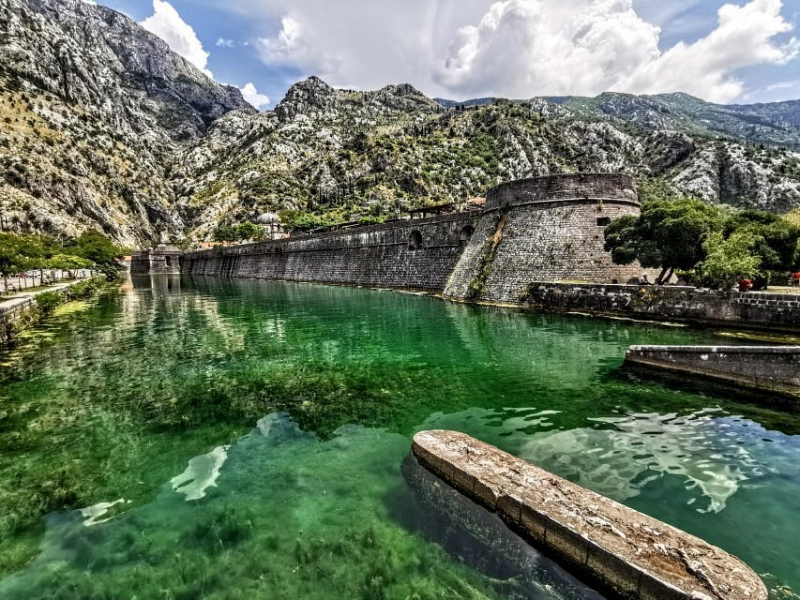
Photo: tripadvisor.com.vn 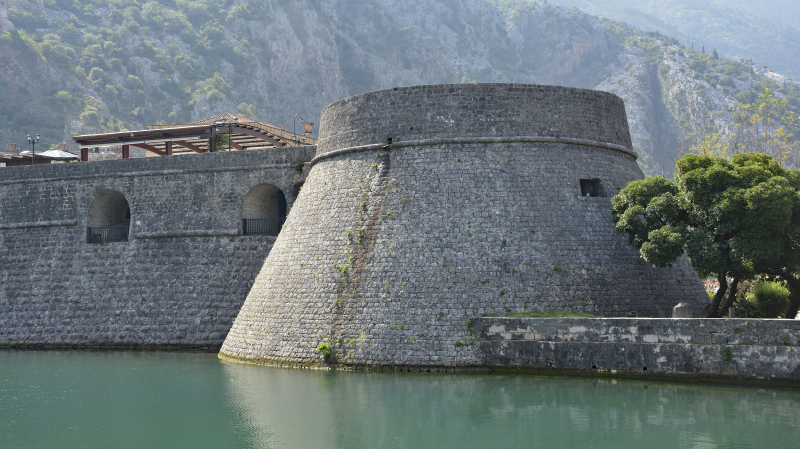
Photo: trip.com -
On a rocky peninsula at the southernmost point of Budva Citadel, is where the Old Town of Budva is located. Before the Greeks colonized the Adriatic, there may have been an Illyrian town in the location of the Old Town, according to archeological findings. The majority of the city walls and structures were built during the Venetian era, even though the area has been inhabited continuously since the Roman era.
The fortified city had gates on each of its four original corners. Seaward-facing gates, however, were eventually closed. Porta di Terra Ferma, the great entrance to the city from the west, is the primary city gate. Additionally, there are four more gates on the north wall and one little gate that faces the Riardova glava beach's southwest.
The Budva Citadel is a striking structure perched on a cliffside with views of the Adriatic Sea's glistening blue seas and golden sands. The fortress was first built in the Middle Ages during the Roman empire and is one of the oldest communities in the Balkans. A complex system of stone walls connects the rustic stone edifice that serves as the main structure to the remainder of the city's defenses with typical Roman precision and attention to detail. Originally built to serve as lookout stations for soldiers.
Location: 7RHQ+927, Zanovica, Budva, Montenegro
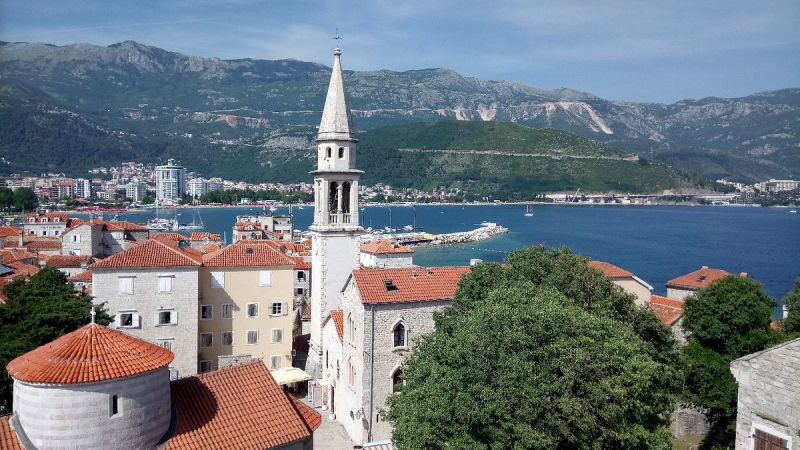
Photo: tripadvisor.com 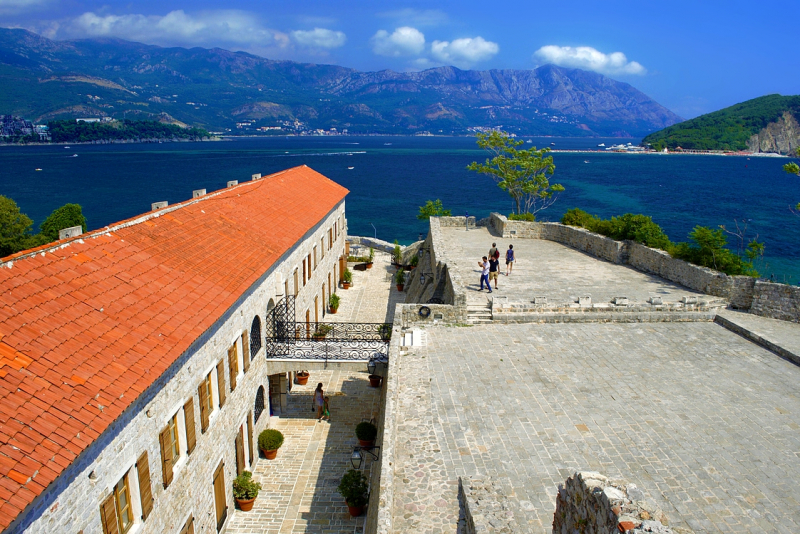
Photo: trekearth.com -
On the summit of Mount Loven is a mausoleum housing Petar II Petrovi-Njego. It is known as the Mausoleum of Njego. The mausoleum was created on the idea of Croatian sculptor Ivan Metrovi, and is situated twenty-one kilometers away from nearby Cetinje on an asphalt road. It was constructed on the same site as the Njego Testament Church, which Njego had constructed in 1845 and dedicated to his forebear Petar I Petrovi-Njego. Njego had erected the church with the aim of being buried there.
Petar II Petrovi-Njegos, a prince-bishop who was born into the royal Petrovi family and educated in some of the most revered and secretive monasteries in Montenegro, was also a well-known poet and philosopher of his time. The cosmic-religious Lua Mikrokozma, also known as The Ray of the Microcosm in English, was one of Petar II's many epic poems. Petar II was both a cultural and political leader.
The prince was initially interred in a chapel he designed and constructed himself atop Mount Loven after passing away from tuberculosis in 1851. After that, twice during both World Wars, his bones were transported from the spot, and the original Mausoleum was destroyed before being reconstructed and inaugurated in 1974. Visitors can visit the chapel today, which is located in Loven National Park, and learn about the complicated history of this national symbol while taking in the breathtaking views of the surrounding vegetation.
Location: 9RXQ+X23, Unnamed Rd, Raičevići, Montenegro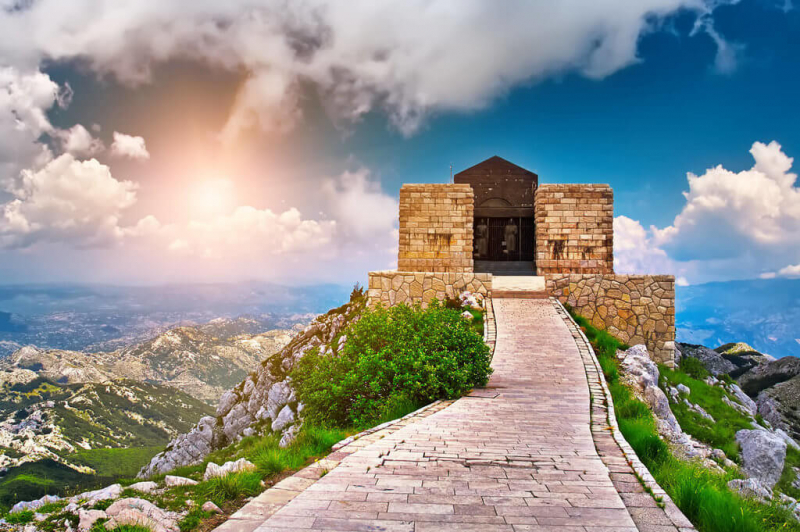
Photo: montenegropulse.com 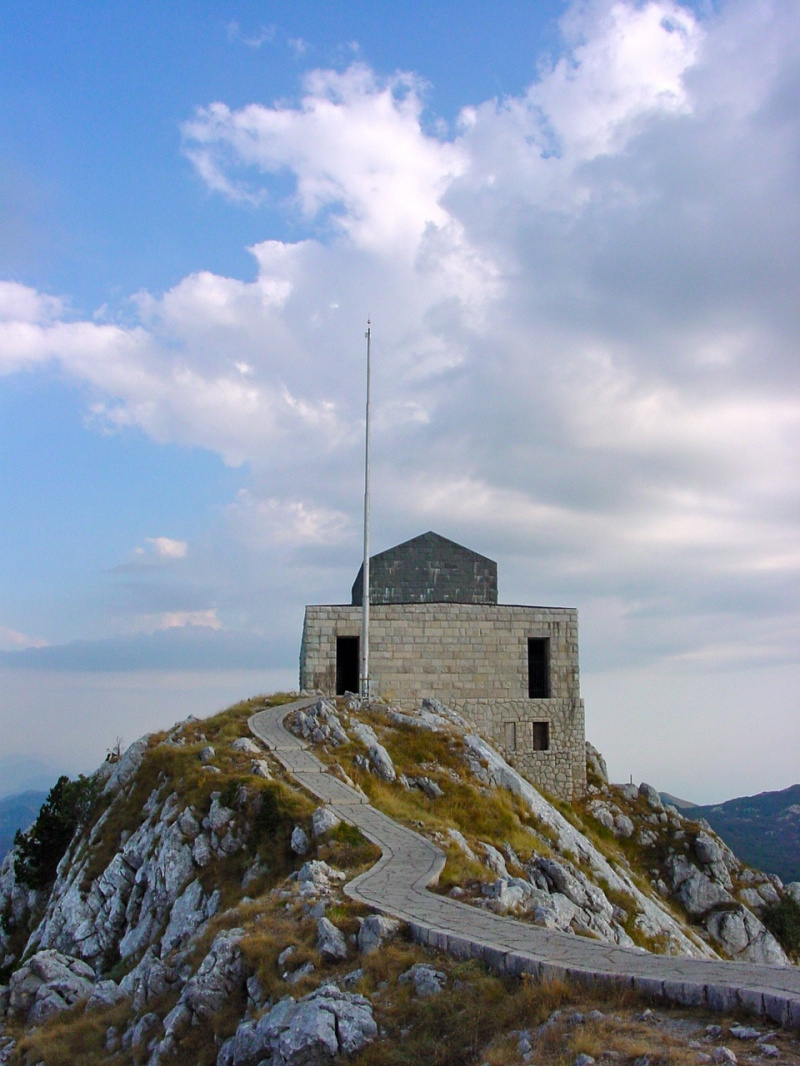
Photo: wikipedia -
The town of Cetinje, which served as both Montenegro's second capital and its former royal capital, now serves as the president of Montenegro's official home. The town's regal history began when Ivan Crnojevi, the king of the Zeta people, moved his court there from bleak in the 15th century as a result of an oncoming Turkish attack. Following the ruler's relocation, the city quickly developed into a bustling Zeta metropolis and the nation's political, social, and cultural center. King Nikolas’ Palace is one of the most beautiful historical sites in Montenegro
The palace known as King Nikolas was Nikolas I Mirkov Petrovich-old Nyegosh's home. A descendant of Ivan Crnojevi, Nikolas I Mirkov Petrovich-Nyegosh ruled Montenegro from 1860 to 1918, first as a sovereign prince and then as king. The structure serves as a reminder of a bygone political order since it was home to the final monarch of Montenegro until the monarchy was overthrown by the Podgorica parliament in 1918. King Nikolas' Palace offers a regal day out in one of the nation's most important historical cities. Visitors can roam through the neoclassical interior and observe notable artifacts, like plaques, swords, and coats of arms.
Location: 432R+6GW, Bar, Montenegro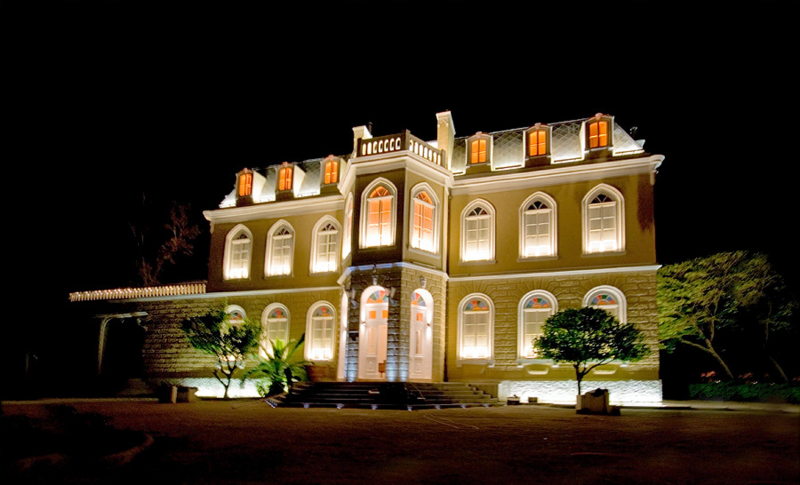
Photo: itinari.com 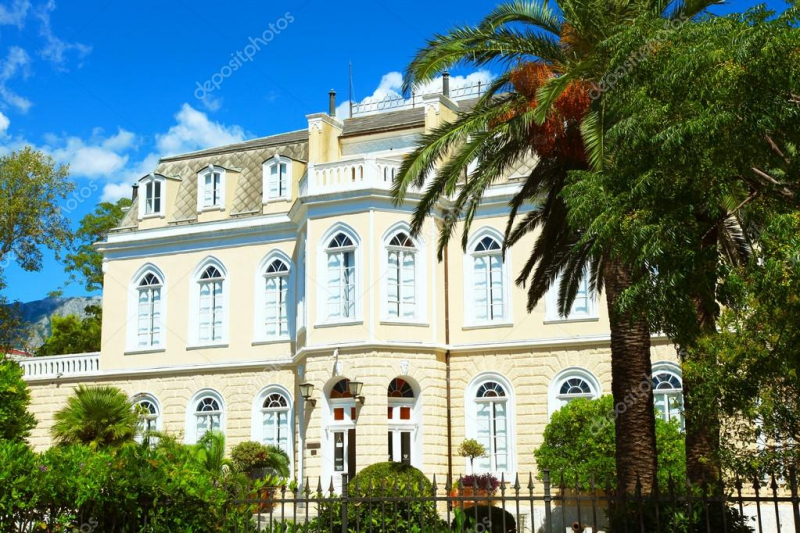
Photo: dephositphoto.com -
The Ostrog Monastery is a Serbian Orthodox Church monastery that is located in Montenegro, high up in the massive rock of Ostroka Greda, against an almost vertical backdrop. It honors Saint Basil of Ostrog (also known as Sveti Vasilije Ostroski), who is buried here. The Bjelopavlii plain is visible from the monastery. The monastery is in the Danilovgrad Municipality, 15 kilometers from Niki and 50 kilometers from Podgorica. The most frequented pilgrimage site in Montenegro is the Ostrog Monastery.
Vasilije, the Metropolitan Bishop of Herzegovina, established the monastery in the 17th century. In 1671, he passed away there, and a few years later, he was exalted. In the cave church devoted to the Presentation of the Mother of God to the Temple, his body is placed in a reliquary.
The 3 km distance between the lower monastery and the upper monastery is customarily covered in bare feet by pilgrims. Visitors provide clothing, blankets, or commodities like soap for the monks before entering the Church of the Presentation to pray to Saint Basil of Ostrog. Every year on May 12, the monastery observes its feast day. According to the Orthodox calendar, St. Basil passed away on April 29, which corresponds to May 12 in the Gregorian calendar.
Location: M2FJ+W64, Dabojevići, Montenegro
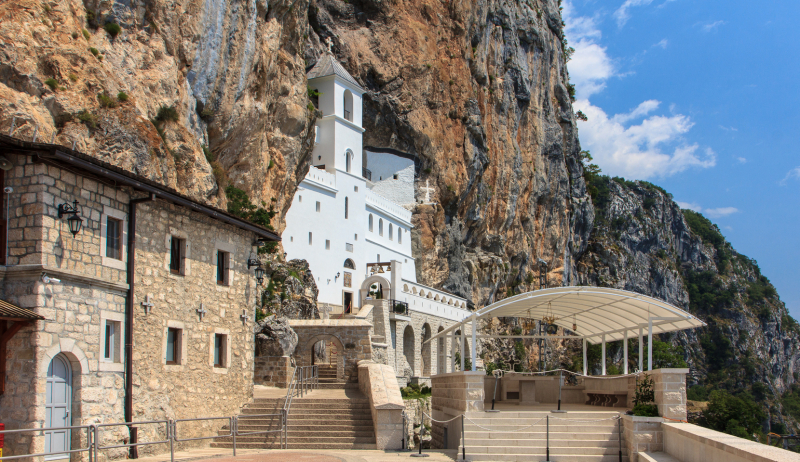
Photo: barcruiseport.com 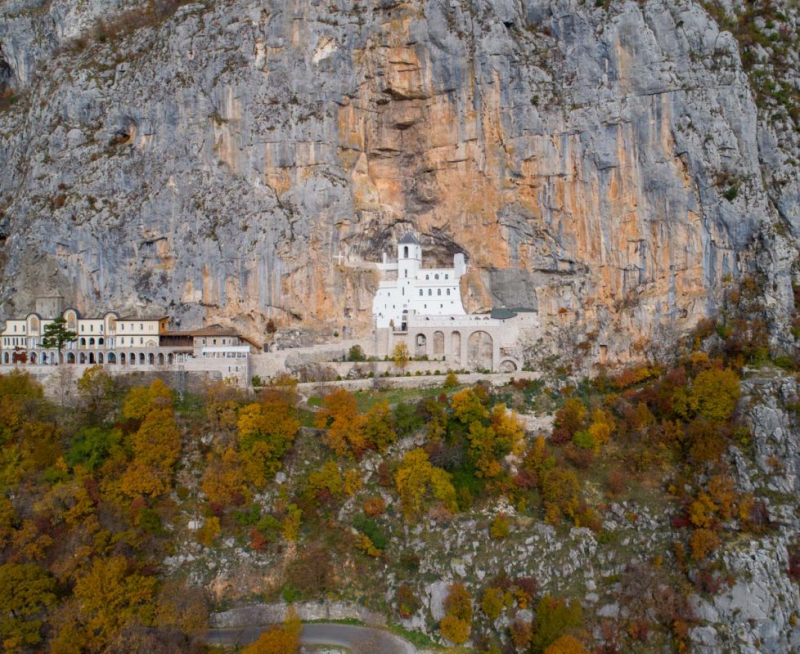
Photo: meanderbug.com -
The Southern Soul Event, a small music festival held yearly on the town's sandy shoreline, is held in Ulcinj every year. Ulcinj is also recognized for its distinctive restaurant and bar scene. Ulcinj Castle, also known as Ulcinj Old Town, is the ideal starting point for tourists who want to learn more about the fascinating history of the city as one of the oldest seaports in the Balkans. This secluded and quiet part of the city is nestled on a tiny peninsula that was formerly a Bronze Age walled settlement.
All of the civilizations that previously called the ruined castle and its surroundings home have left their imprints on the building. A stroll through the Old City is an interesting way to spend the day because it features buildings, fortifications, and citadels that showcase unpolished instances of Cyclopean stonemasonry. Explore the twisting streets and little alleys to see Montenegro's past at its most beautiful.
It was founded by the Illyrians on a small peninsula on the right side of the Pristan Gulf, which is a part of the Adriatic Sea, and is now primarily populated by Albanians. The Cyclopean Wall is currently the oldest relic. Since it was first constructed, the castle has undergone numerous restorations, despite significant alterations by the Byzantinians, Serbs, Venetians, and Ottomans. Outside of this fortress, Ulcinj's contemporary city was constructed.
Location: W6F3+M38, Ulcinjskih moreplovaca, Ulcinj 85360, Montenegro
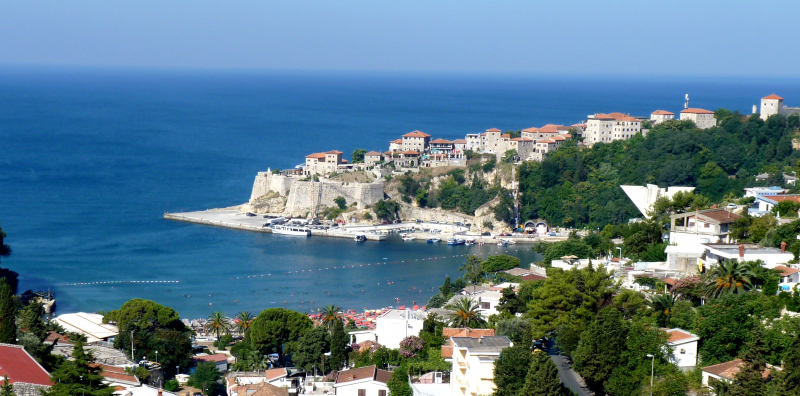
Photo: wikipedia 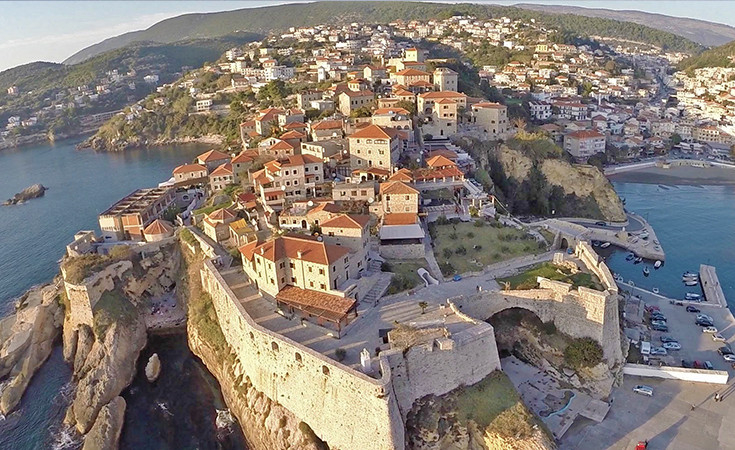
Photo: Kasadoo.com -
The next position on the list of the most beautiful historical sites in Montenegro is Stari Bar. A little village in Montenegro is called Stari Bar. It is situated inland, a short distance from the brand-new city of Bar, on a hill called Londa at the base of Mount Rumija. Being inhabited since the early Middle Ages and having been ruled by the Byzantines, the Nemanji dynasty, Louis I of Hungary, and the Ottomans, this tiny town has seen an astonishing amount of drama and action.
With the proud stone tower towering up against the beautiful Mount Rumija backdrop, the abandoned stronghold is one of Montenegro's most appealing sights. Stari Bar experienced a violent bombardment in 1877 as the Montenegrin army fought to retake the town from Ottoman occupants. After seven weeks of fighting, they ultimately prevailed, adding to the town's political unrest. As a result, the town was largely destroyed, leaving just the fortress settlement. Visitors can explore these moving remains and the sparsely populated adjacent town, and there are a few quaint cafes and eateries close by to support their explorations of local history.
Location: resting on Londša hill, Montenegro
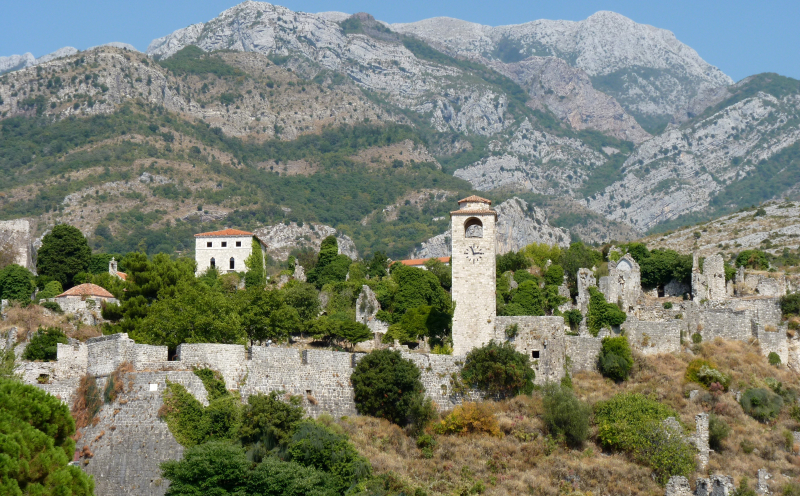
Photo: wikipedia 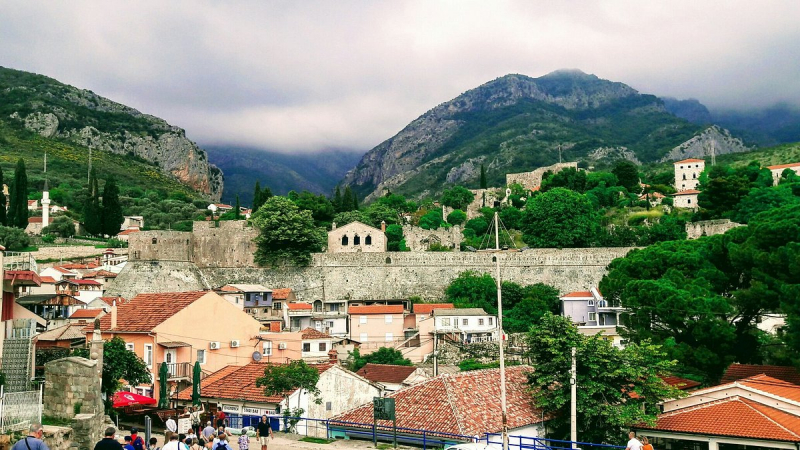
-
One of the most beautiful historical sites in Montenegro is Our Lady of the Rocks. One of the two islets in the Bay of Kotor, Montenegro, off the shore of Perast is called Our Lady of the Rocks. It is an artificial island made by sinking old and seized ships that were laden with rocks. The main structure on the islet is the Roman Catholic Church of Our Lady of the Rocks, which also houses a museum. A navigation light is located at the western extremity of the islet, and there is a small gift shop nearby.
The Madonna and Child emblem was discovered on a rock in the sea on July 22, 1452, and local seafarers are said to have created the islet throughout the years while upholding an old pledge. Each successful expedition ended with them placing a rock in the Bay. The islet slowly emerged from the water over time. Even in modern times, throwing rocks into the ocean is still a common practice. Every year, as the sun sets on July 22, a tradition known as fainada takes place in which inhabitants use their boats to toss rocks into the water, enlarging the island's surface.
Location: Bay of Kotor, Montenegro
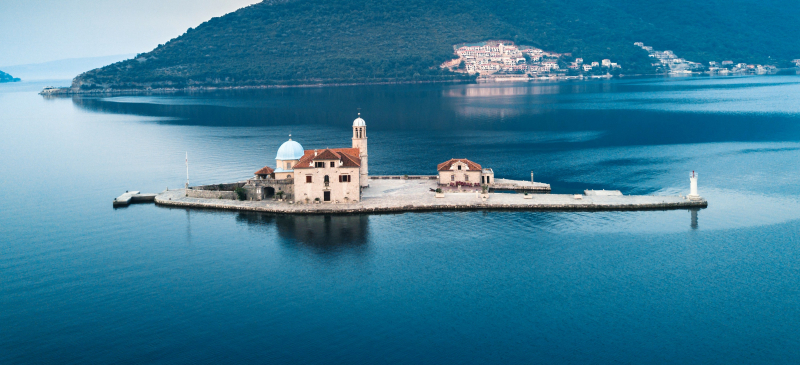
Photo: itinari.com 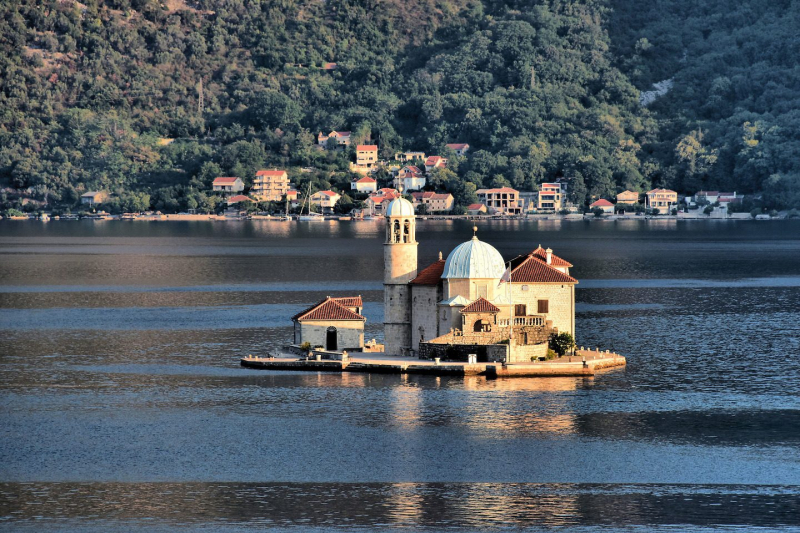
Photo: encirclephotos.com -
One of the two Roman Catholic cathedrals in Montenegro is the Cathedral of Saint Tryphon. The entire Bay of Kotor and the Municipality of Budva fall under the jurisdiction of the Roman Catholic Diocese of Kotor, whose seat is there.
It is situated in Kotor, one of the most exquisite and well-preserved fortified medieval cities in the Mediterranean. It was erected on the site of an earlier church that had formerly stood there a very long time ago in honor of Saint Tryphon, the saint and protector of the city. The previous church, where the saint's remains were stored after being transported from Constantinople, was constructed in 809 by Kotor resident Andrija Saracenis.
The building was built in honor of Saint Typhon, a third-century Christian martyr who is regarded as the city's patron saint. It is predominantly Romanesque in style, with two Baroque bell towers added after the first earthquake. Step inside to see the exquisitely preserved stone columns of the old church and a complex silver alter from the 12th century. Visitors can also see a variety of ancient icons and artworks that date back to the church's founding and that depict its evolution through time.
Location: Kotor, Montenegro
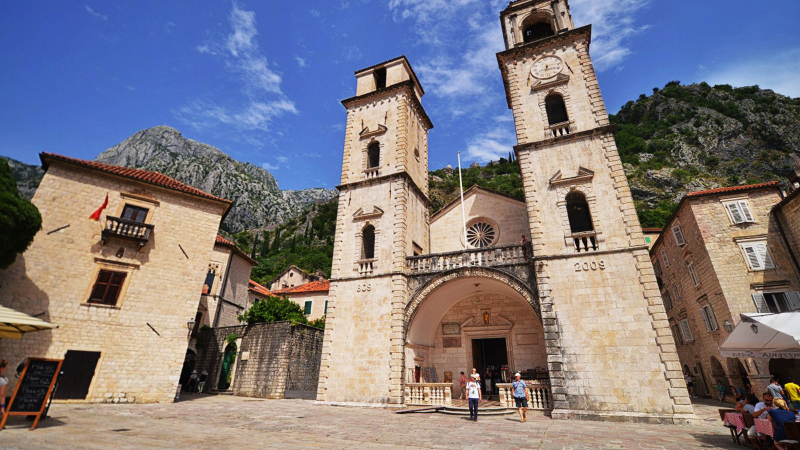
Photo: mne.today 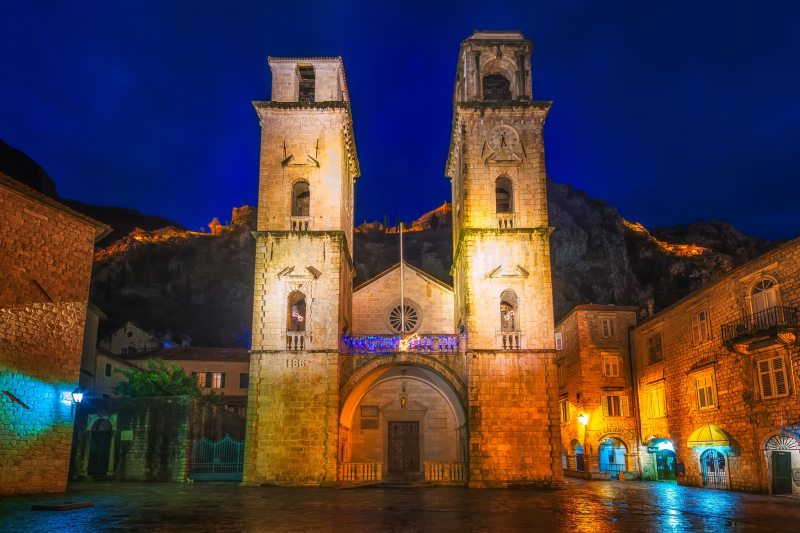
Photo: sumfinity.com -
The Mamula Fortress and its sinister past would fascinate anyone with a fascination for deserted buildings. The stronghold was built by the Austrian Admiral Lazar Mamula in 1853 to defend against invading ships and is situated on the small, uninhabited island of Lastavica, just off the coast of Marista. The castle served as a jail and detention camp for Benito Mussolini's fascist forces during World War II because of its remote location and proximity to the sea.
The camp was jam-packed with more than 2000 captives, men, women, and kids from places like Dalmatia and Boka that were allegedly adversaries of the Italian occupiers. The island, which can be reached by swimming, kayaking, or a rowing boat, is a fascinating piece of recent history in Montenegro and makes for a gloomy day of exploration. Numerous guided tours to the island depart from Prevlaka in Croatia or from the adjacent town of Lutica throughout the summer.
The stronghold is now under government protection as a historical structure. Because of its excellent preservation, it draws tourists. In addition, there is a park with a variety of exotic tropical and subtropical flora. Old spiral steps are still standing in addition to the bakery and control tower structures. Tourists still flock to take an hour-long adventure into history despite the pier's destruction.
Location: boundary of two countries, Croatia and Montenegro, between Prevlaka and Luštica peninsulas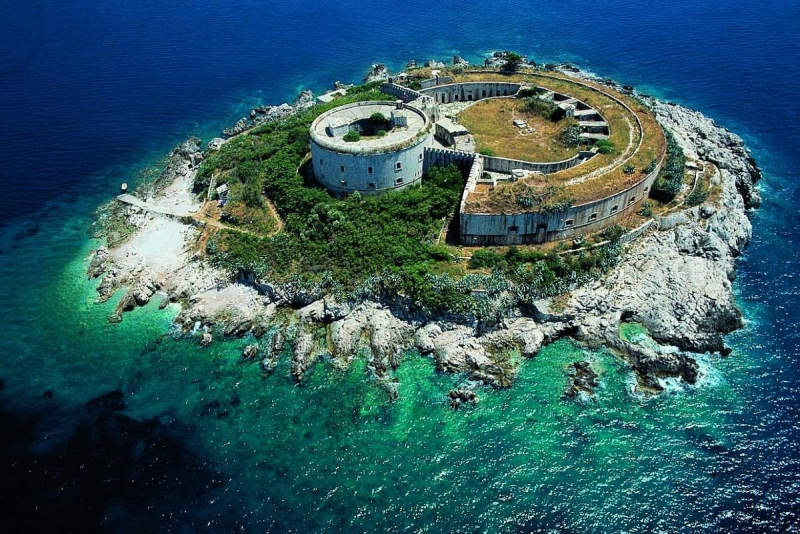
Photo: tripadvisor.com.vn 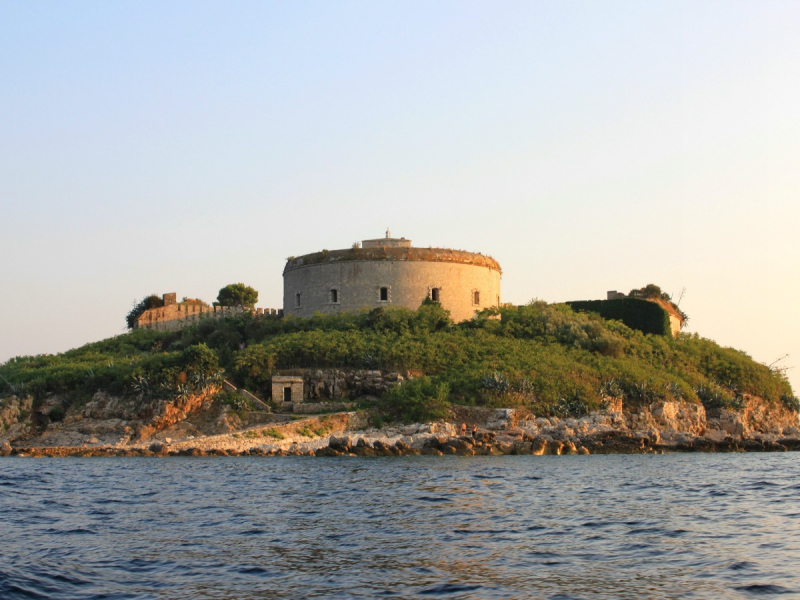
Photo: balkmaninsight.com































